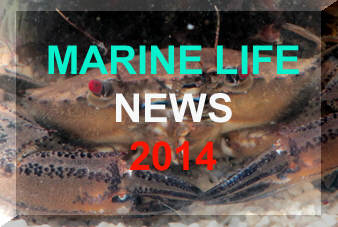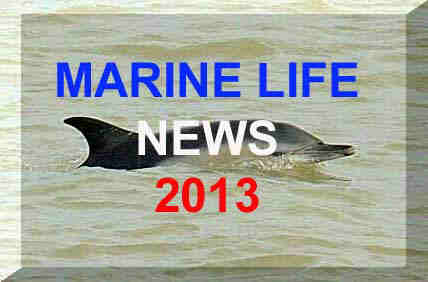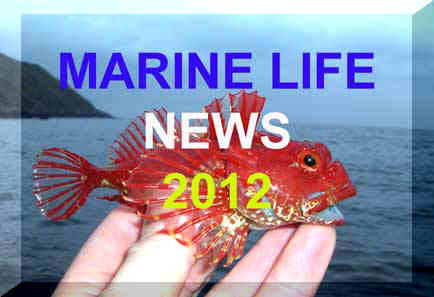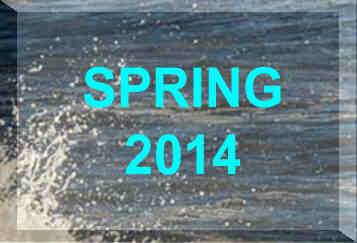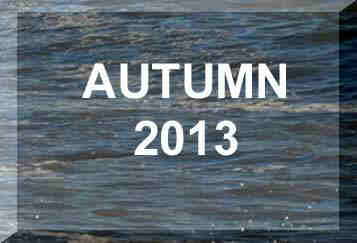LATEST
NEWS:
30
December 2014
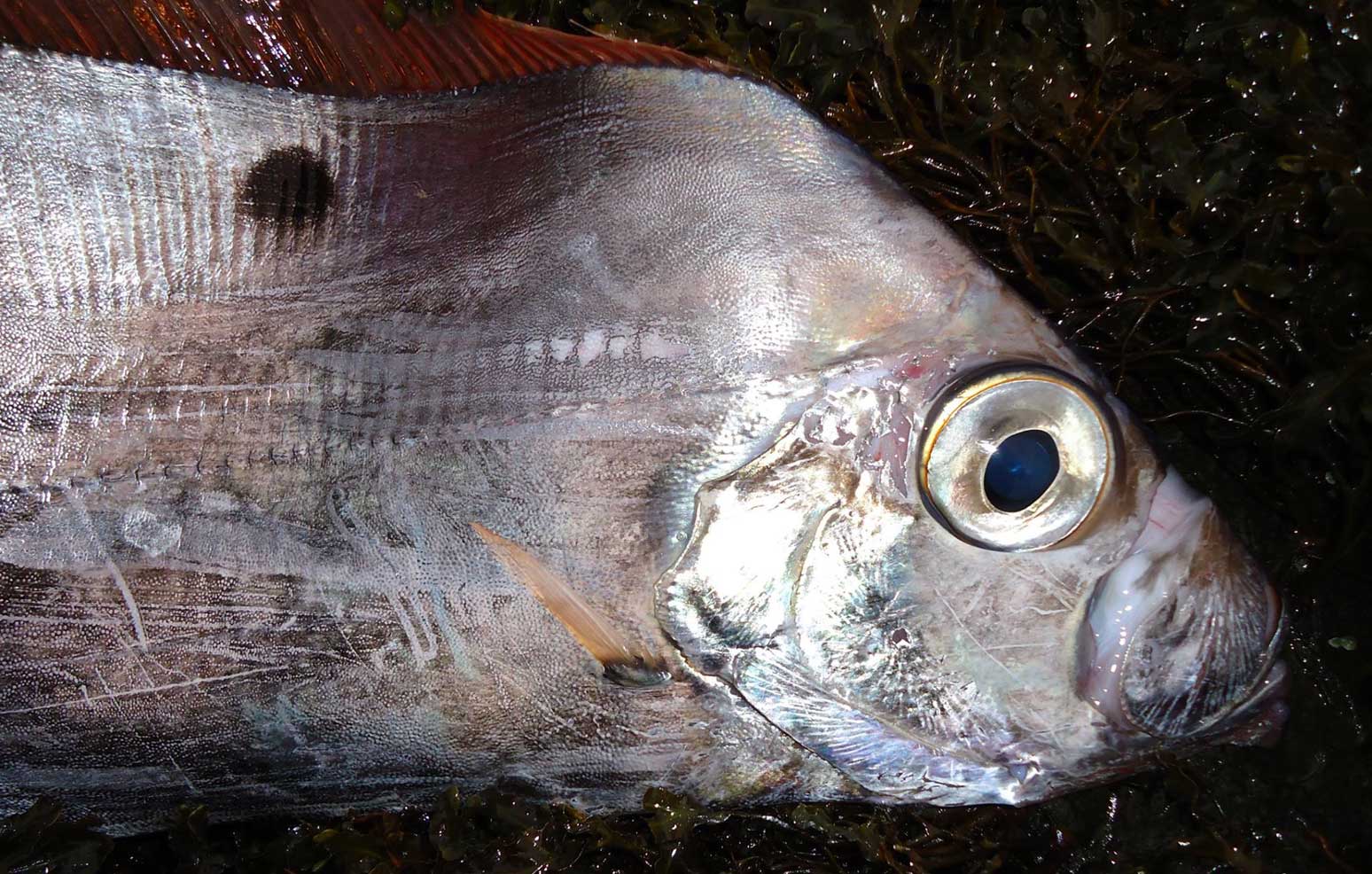
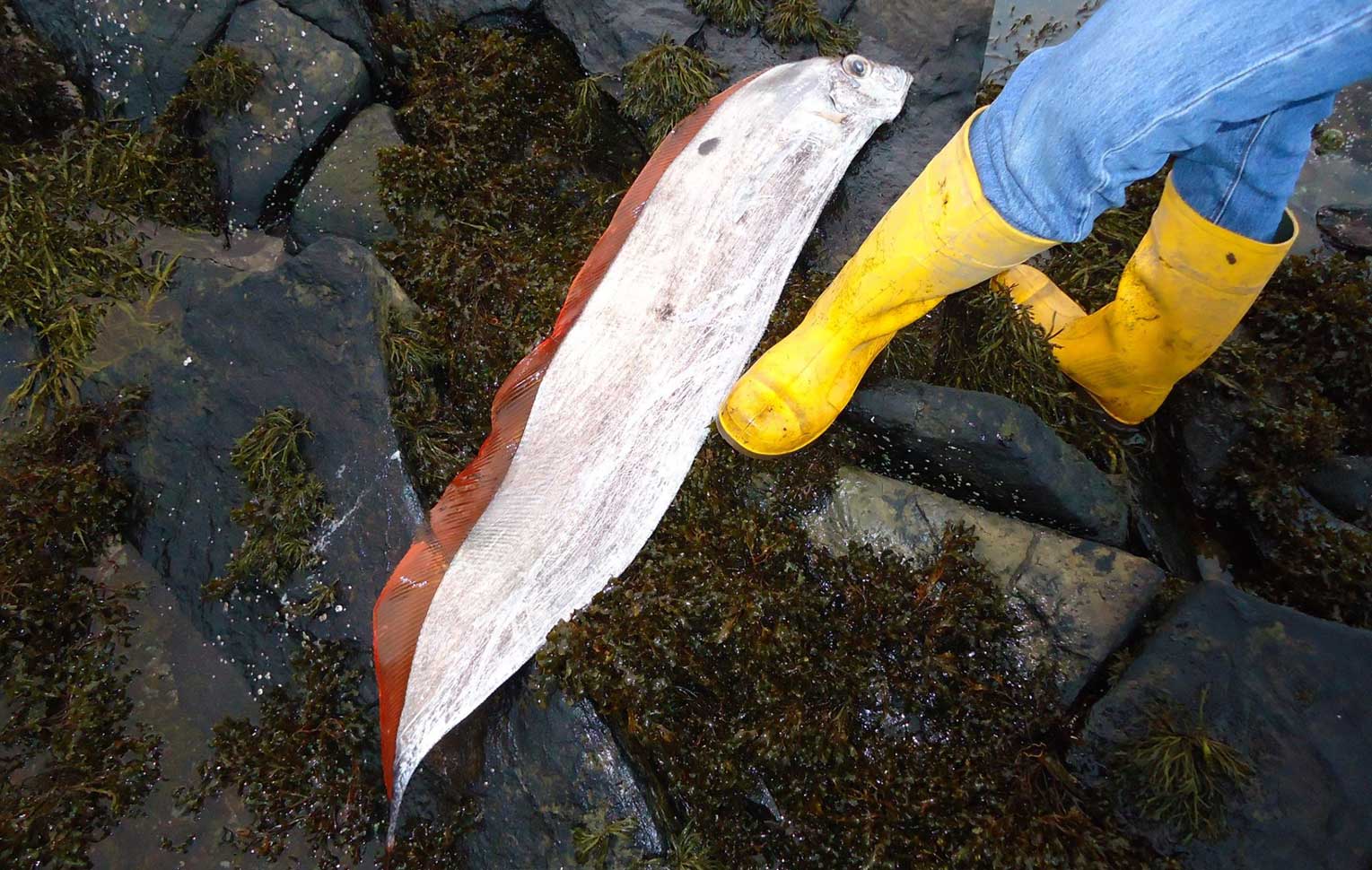
Dealfish
Photographs
by Senga Millar
An
adult
Dealfish
(Ribbonfish
family),
Trachipterus
arcticus,
was spotted actually swimming offshore in Scapa
Flow at Bu in Orphir,
Mainland,
Orkney.
"It
was alive as we watched it swim inshore then we went back down with the
camera it was on the rocks." Alas, this large
150 x 30 cm (5 ft x 1 ft) and rather distinctive silvery fish, with a long
bright orange dorsal fin, perished as would be expected out of its normal
deep sea environment. This unusual fish
usually lives at depths of over 300 metres.
Previous
Report 2014
BMLSS
Strandline
BMLSS
Beachcombing facebook
NAFC
Marine Centre: Dealfish
26
December 2014
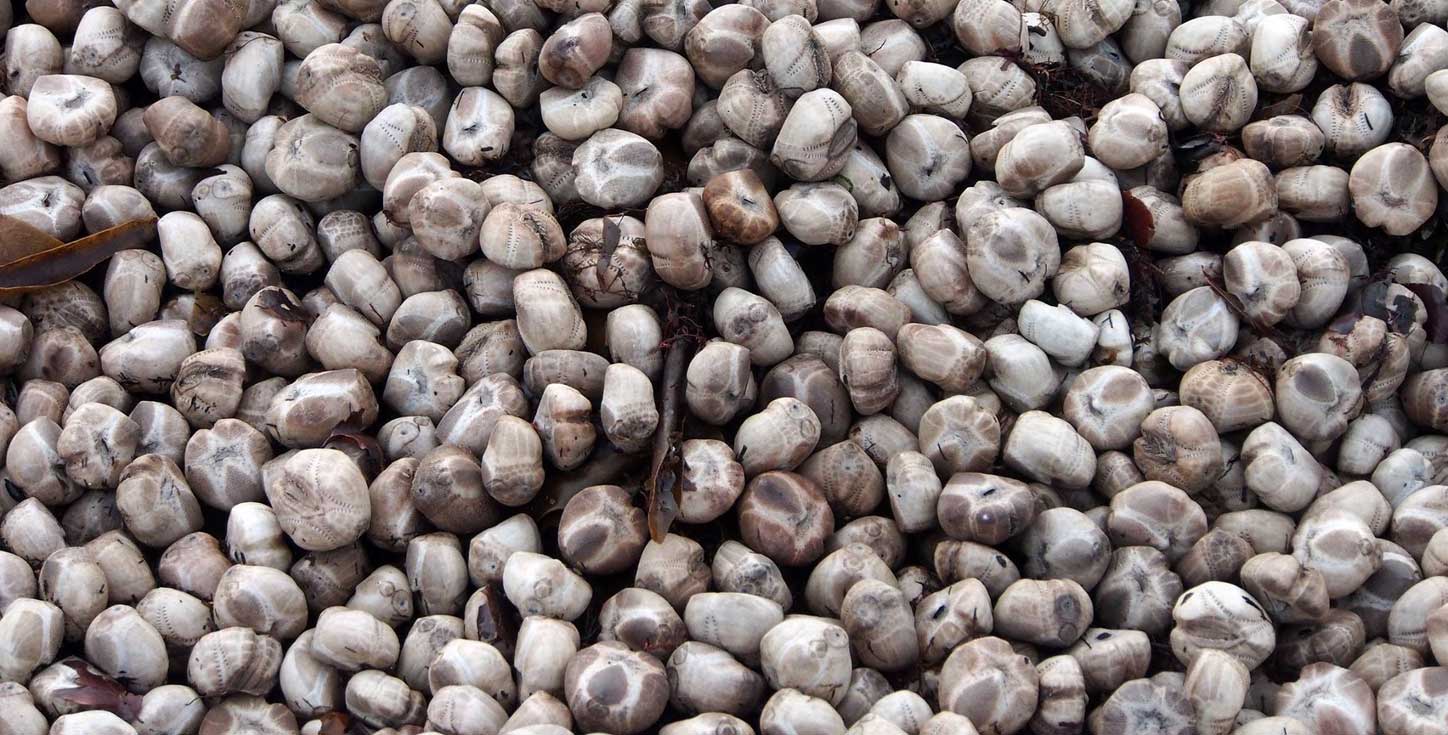
A large
stranding
of Heart Urchins, or Sea Potatoes,
Echinocardium
cordatum, occurred off the west coast
of Scotland on including Troon
and also Prestwick
Beach. They were not freshly dead as the tests
had lost their spines. The tests washed ashore in the gales.
24
December 2014

A virtual
skeleton of a Kemp's
Ridley Turtle,
Lepidochelys
kempii, was discovered washed up on
a beach at Tarbet
in the North
West Highlands of Scotland.
21
December 2014
Two
young Kemp's Ridley Turtle,
Lepidochelys
kempii, were discovered on the shore
near Formby on Merseyside
and Cumbria's Walney
Island, north-west England on coasts facing the Atlantic Ocean. The
critically-endangered turtles usually inhabit the Gulf of Mexico, but may
have been "cold-stunned" by a drop in ocean temperatures. These young turtles
were still alive but in poor condition. These
endangered turtles breed on the coasts of Mexico and are usually found
in the Gulf of Mexico
and were thought to have blown across the Atlantic Ocean. The turtles are
likely to have suffered in the cold seas and would have succumbed if they
had not been rescued.
Another
one was washed up starving and dying on the Dutch coast at Den
Helder Beach.
BMLSS
Turtles
20
December 2014
A
huge wreck of jellyfish and pelagic jellyfish-like
animals occurred on the north coast of Cornwall with tens of thousands
of By-the-wind Sailors,
Velella
velella, washed ashore on various
shores, and a thousand plus Mauve Stinger
Jellyfish, Pelagia
noctiluca, at Sennen
Cove, Watergate
Bay
and Fistral Beach
(Newquay). The stranding
also included thousands
of Goose Barnacles,
Lepas
anatifera.
BMLSS
Jellyfish
BMLSS
Beachcombing
BMLSS
Barnacles
18
December 2014
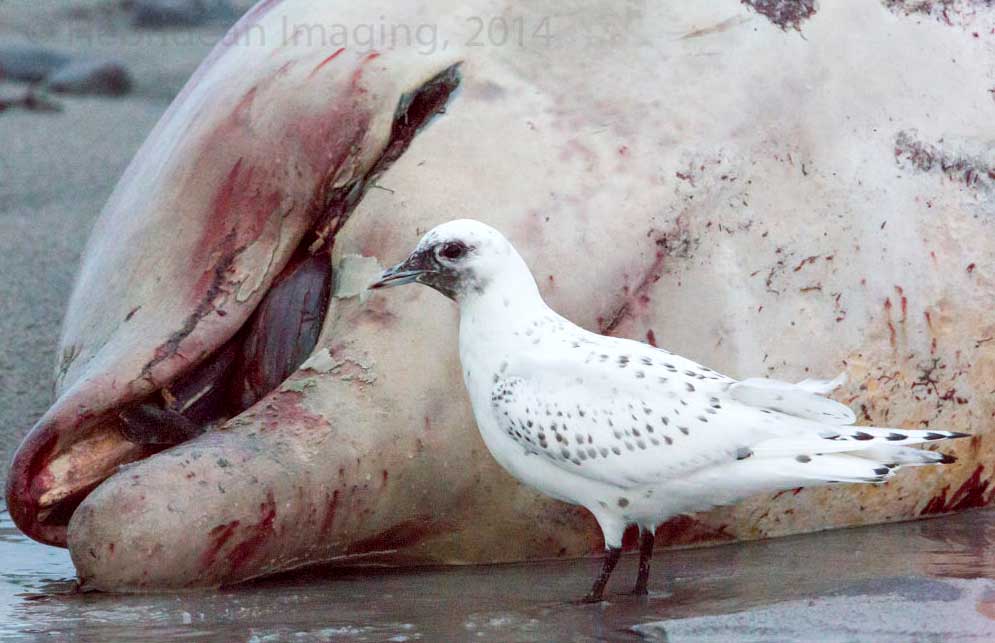
An Ivory Gull, Pagophila
eburnea, visited the carcass of a Cuvierís
Beaked Whale at Benbecula
Photograph
by Yvonne Benting
Birdguides
Report
Another
Cuvierís Beaked Whale, Ziphius cavirostris,
was stranded dead at Borve Benbecula
in the Outer Hebrides,
Scotland.
13
December 2014
A
five metres long female
Cuvierís Beaked Whale, Ziphius cavirostris,
was stranded dead at Portballintrae
in County Antrim,
Northern Ireland. The whale was underweight. Cuvier's Beaked Whales
are
a deep water species and are not usually observed from the shore and strandings
are infrequent.
Another
Cuvierís
Beaked Whale,
Ziphius cavirostris,
was stranded dead on Frobost
Beach in the Outer
Hebrides, Scotland.
BMLSS
Cetacea
Whales
& Dolphins in British Seas
9 -
10 December 2014
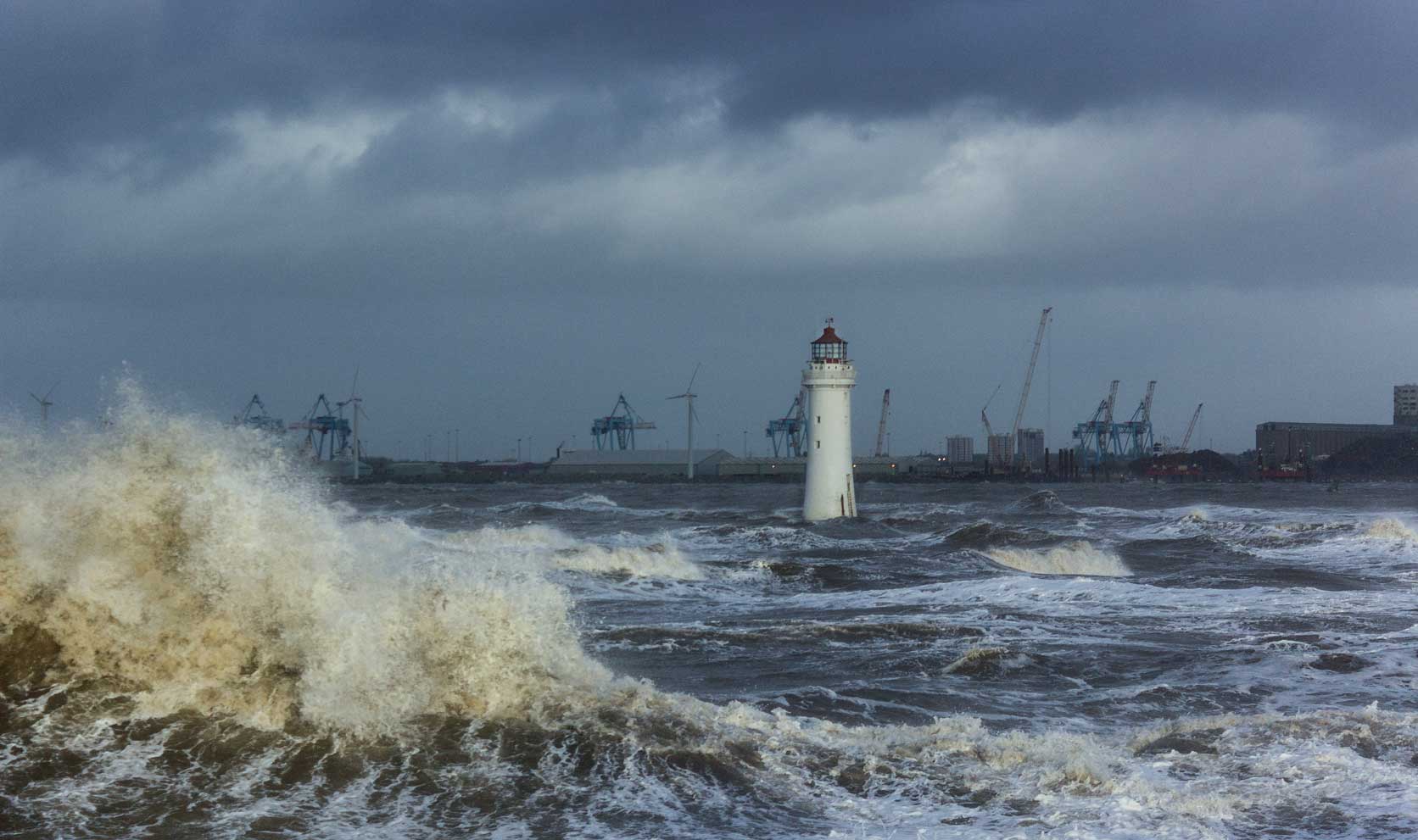
New
Brighton, Merseyside, on the high tide
Photograph
by Ade McCabe
An
explosive
cyclogenesis, known colloquially as a "weather
bomb", hit northern England and Scotland, produced gigantic waves
(up to 18 metres over open water in the Atlantic) and swell, storm force
winds and excessive thunder
and lightning
especially over Scotland. A wind speed of 144 mph was recorded on the outlying
islands of St. Kilda off the west
of Scotland.
8
December 2014
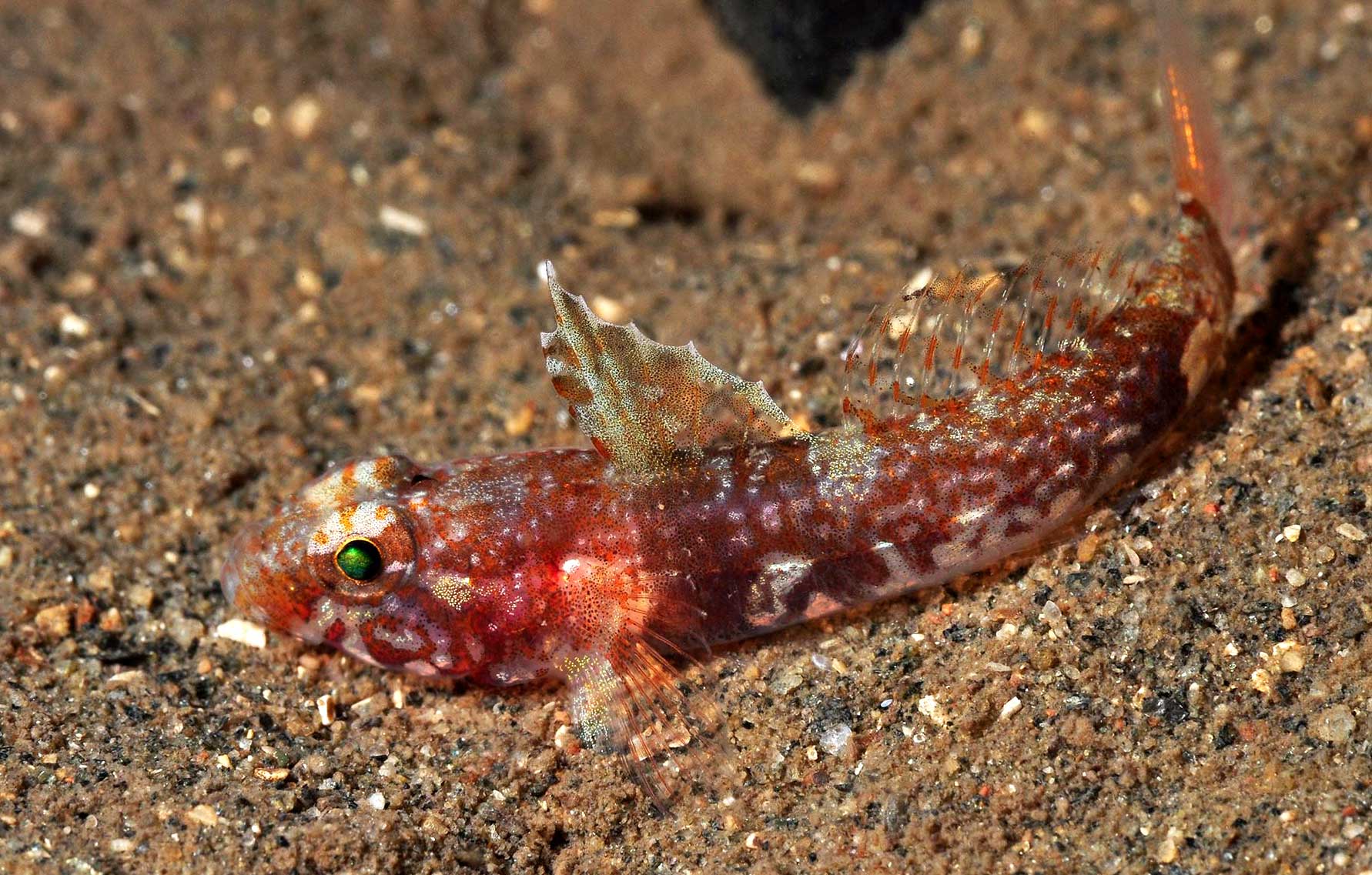
Diminutive
Goby
Photograph
by George Brown
A miniature
(25 mm) goby, a female Lebetus
scorpiodes, known as the Diminutive
Goby, was photographed on silt covered
bedrock on a night dive at Wolf Rock, in Loch
Duich, western Scotland. This goby is
rarely recorded because it it is small and overlooked with a local distribution
in seas around the British Isles.
BMLSS
Gobies
5
December 2014
A
two metres long Shortfin Mako Shark*,
Isurus
oxyrinchus, was washed ashore dead on
the vast sandy shore at Barmouth,
Cardigan
Bay, west Wales. (* ID not 100%).
Barmouth
Shark
Photographby
Harry
Allday
Identification
of the the Mako
and Porbeagle, Lamna
nasus, is difficult and I determined
it to be the rarer Mako
from the shape of the first dorsal fin lacking a white patch. It is difficult
because of the pointed snout and position of the secondary dorsal fin I
first thought it was a Porbeagle.
Teeth may indicate a Porbeagle?
Porbeagle
& Mako ID
BMLSS
Sharks
The
post-mortem confirmed the identification as a Mako
Shark and the stomach contents contained the
remains of a Harbour Porpoise,
Phocoena
phocoena
Shark,
Head and Teeth
Photograph
on
the flickr gallery hosted by Hugh Griffith Roberts
|
|
Shane
Huxter found
a blue-coloured Velvet Swimming Crab*
(Lady Crab in Guernsey), Necora
puber, in Belle
Greve Bay, on the east coast of Guernsey.
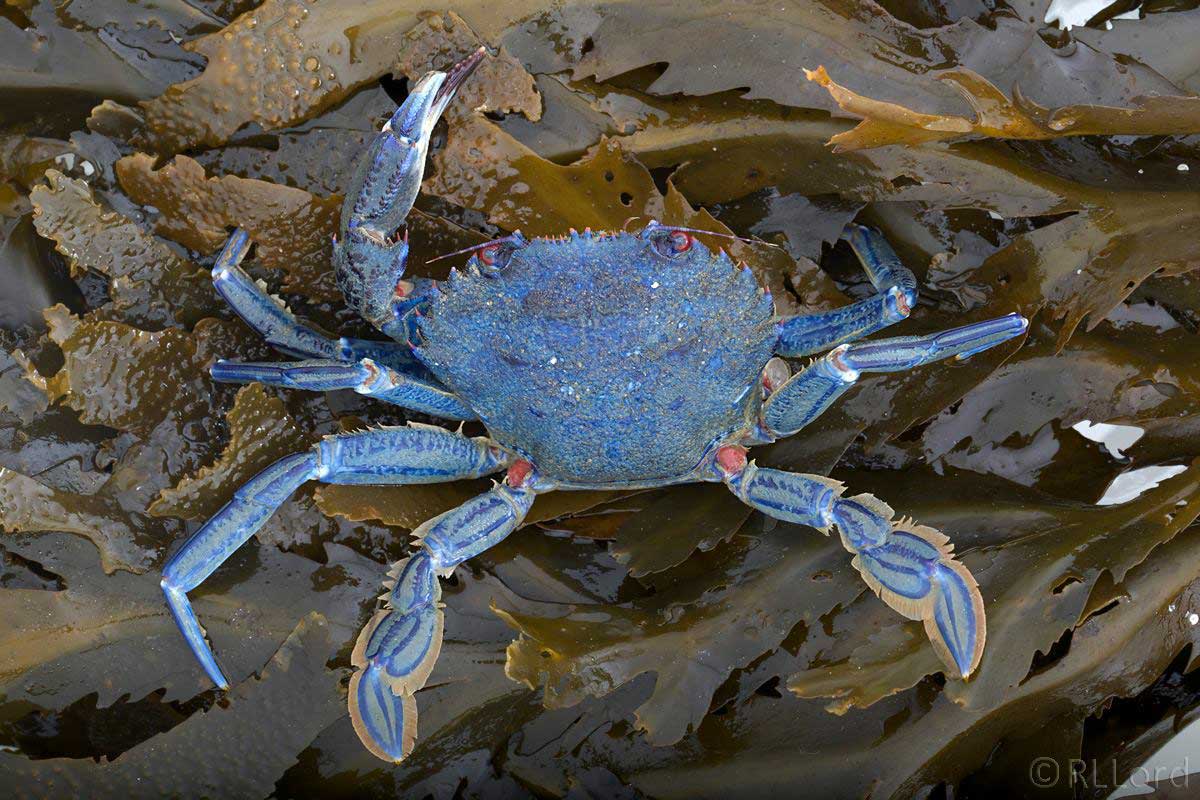
Blue
Velvet
Swimming Crab (=Lady Crab), Necora puber
Photograph
by Richard Lord
Sealord
Photography
The
shell colour of Necora puber
is normally blue but the crab is usually covered in a fine brown 'hair'
which gives it an olive-green colour. This individual's bright blue shell
colour might be a genetic variation to the normal colour.
(*This
crab if often known by other names, including the Devil's
Crab.)
4
December 2014
A Greater
Forkbeard, Phycis
blennoides, was discovered
in a crab pot out of Bridlington,
Yorkshire. The Greater
Forkbeard is a fish normally found in deep
water of over 100 metres and only abundant much further south. There is
only one fish in the North Sea that has such elongated pelvic
fins.
27
November 2014

Pygmy
Sperm Whale, Kogia
breviceps
Report
& Photograph by Rohan
Holt
facebook
The
Pygmy
Sperm Whale, Kogia
breviceps, washed
up alive on Anglesey a week ago has now washed up dead at Dinas
Dinlle Beach
on the Welsh mainland coast, south-east of Anglesey. Cetacean experts were
busy examining the corpse.
This
whale is classified as a Vagrant in the British
Cetacean List.
25
November 2014
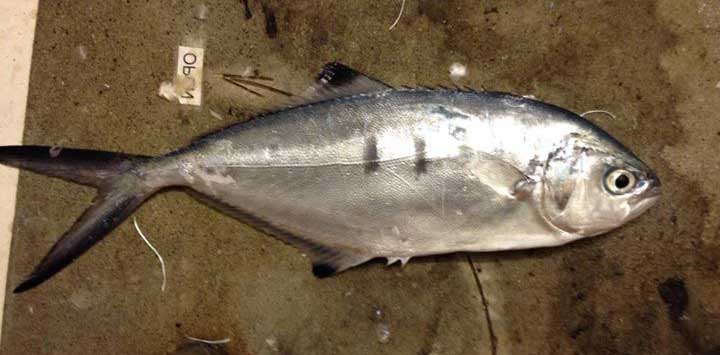
Derbio, Trachinotus
ovatus
Report
& Photograph by Matt
Round
on Fishing
News facebook
A Pompano
(also called a Derbio),
Trachinotus
ovatus, was caught off Plymouth. This
is a warm water fish that is only rarely seen or caught in British seas,
a moderately common shoaling fish in shallow water in areas of surge in
the Mediterranean
Sea and the adjacent Atlantic shores.
This small fish (about 35 cm long) is found in clear waters over sand or
mud bottoms in the surf zone and also caught by anglers from rocky shores
from the Bay
of Biscay southwards.
Previous
Record 2005
It
is classified in the family Carangidae,
known as Jacks and Pompanos.
20
November 2014
Rescuers
of a stranded cetacean on Newborough
Beach, Anglesey,
were surprised to discover a rare Pygmy
Sperm Whale, Kogia
breviceps, washed up alive on the
sand. At three metres long it still look a team of people to transport
the whale to the sea where it swam off successfully into deeper water.
The
Pygmy
Sperm Whale is found in tropical seas worldwide
but there have only been about a dozen records in British seas, mostly
strandings as this whale is not often seen from boats.
BMLSS
Cetacea
BMLSS
Pygmy Sperm Whales
15
November 2014
Another
Oceanic
Pufferfish,
Lagocephalus
lagocephalus,
was discovered on the rocks at Paignton,
south Devon.
10
November 2014
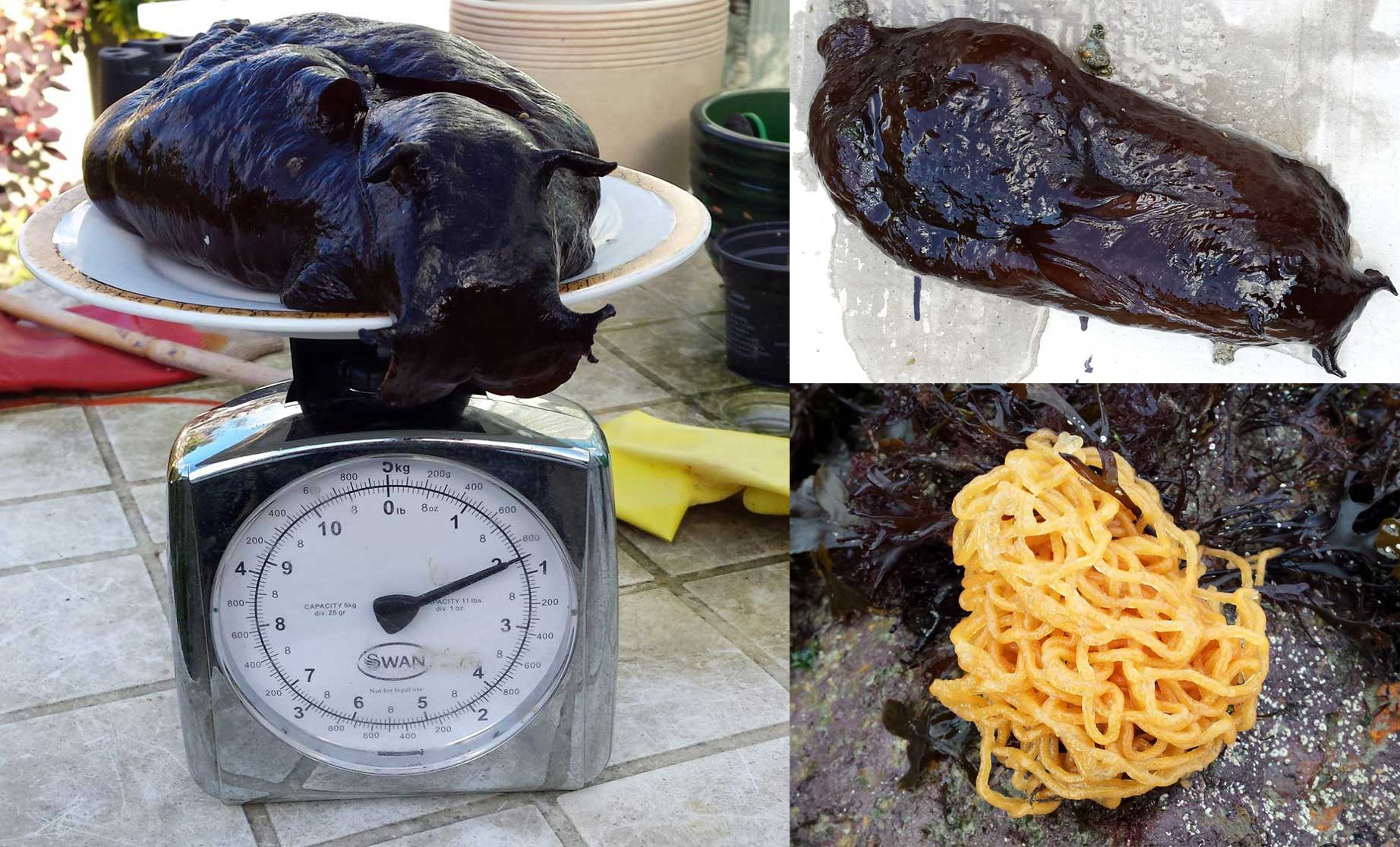
Sea
Hare and eggs
Photographs
by Walter Low Fisher
A huge
Sea
Hare, Aplysia,
laying eggs, was discovered at Belcroute
on the south coast of Jersey. It weighed in at a massive 900 grams which
ruled out the normal species Aplysia
punctata found around the shores of
Britain. Its huge bulk and appearance almost certainly means it is the
southern species Aplysia
fasciata which is only rarely
recorded around the Channel Islands with at least one
record off Cornwall and others from Devon
and Dorset.
BMLSS
Aplysia
4 November
2014
A
tropical Oceanic Pufferfish,
Lagocephalus
lagocephalus,
was discovered washed up dead on Chesil
Beach, Dorset, by Richard
Fabbri, having been swept on to pebbles
by the high tides. The fish was 30 cm along from
head to the base of the caudal fin, but was actually longer than this because
this fish inflates itself like a balloon to make it bigger to discourage
predators. It does not make a good meal, especially
for humans, because the fish more than likely contains a toxin tetrodotoxin
sufficiently harmful enough to cause death to anyone eating the fish without
expert culinary preparation. It is advisable not to even touch the fish.

Oceanic
Pufferfish
Photograph
by
Richard Fabbri
The
Oceanic
Pufferfish is normally found in tropical
seas and is a very rare and surprising discovery in the English Channel.
Previous
Report 2006
Poisonous
Fish
BMLSS
Beachcombing
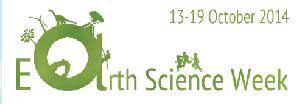
In
celebration of Earth
Science Week, the Geological Society
of London named its
top 100 geological sites in the UK and Ireland, including 10
"people's favourites".
Geological
Society: Final 100 List
Geological
Society: Coastal List
11
October 2014

A splendidly
marked Almaco Jack,
Seriola
rivoliana, was caught by angler Scott
Shepherd from a boat out of Ilfracombe,
North Devon. It was a large specimen weighing 1
lb
14 oz and it was returned to sea. This
Caribbean fish is rarely recorded in British seas.
BMLSS
Amberjacks
9 October
2014
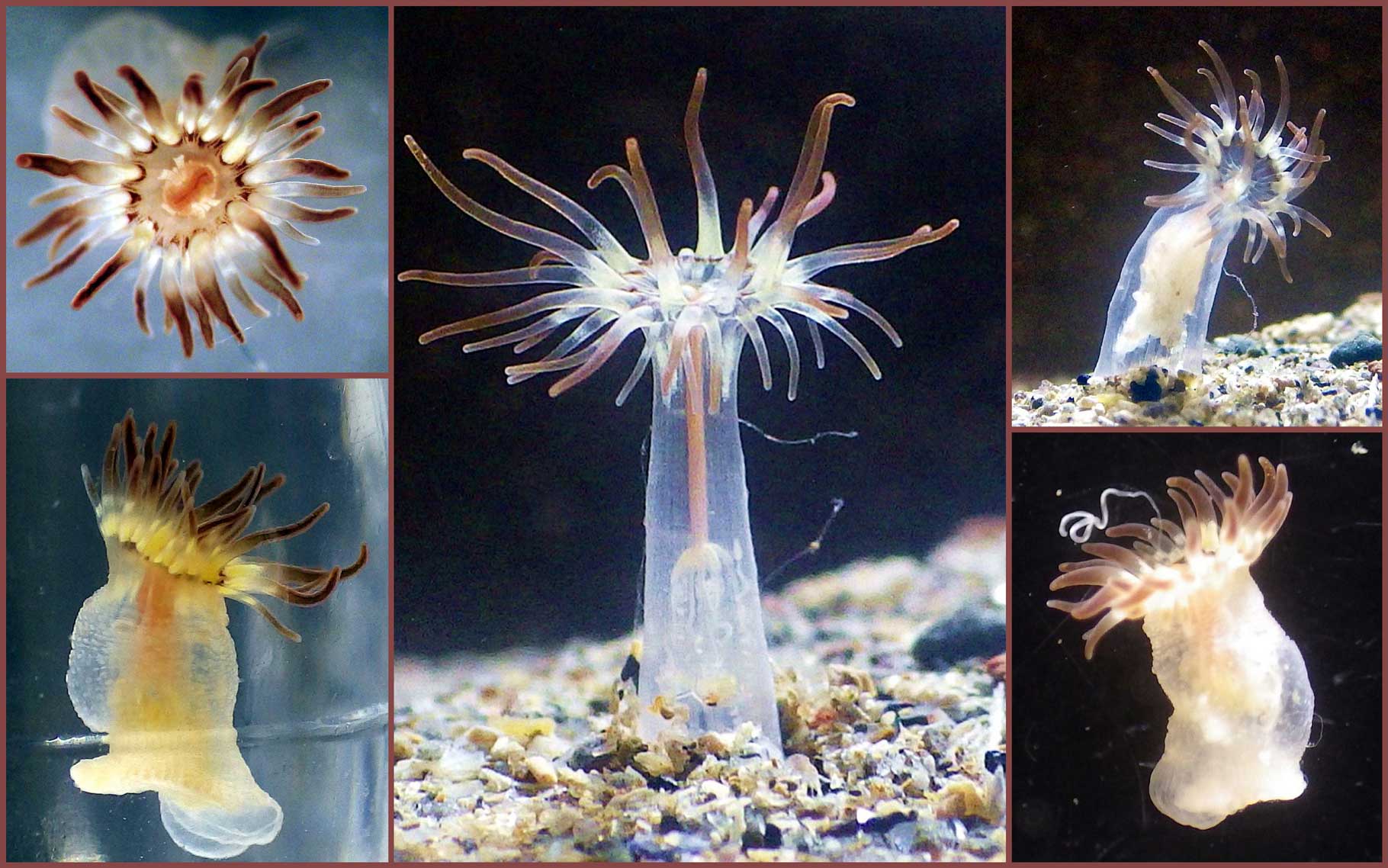
Aiptasiogeton
pellucidus
var.
comatus
Photographs
by Rob Durrant
on
NE
Atlantic Cnidaria on facebook
A tiny
6 mm long sea anemone was collected from Ilfracombe
Beach,
north Devon, from low down on the shore amongst
some Kelp
holdfasts and it was only noticed when the seaweed was placed in an aquarium.
Its initial identity was a puzzle and it did not fit the appearance of
any of the young or miniature versions of sea anemones normally found in
the shallow seas around Devon. Only after a fortnight in captivity did
the anemone settle down and discovered to be an anemone that was initially
suspected that was so rarely recorded that none of the general marine life
experts were familiar with the tiny species from personal experience. I
am still not positive about the specific name.
Notes
on the montage:
Top
left: Disc and tentacles with a brownish-orange mouth. In contrast,
all specimens from Brittany
have a pink
disc and tentacles.
Top
right: The white inside is a small piece of whitefish ingested.
Bottom
right: Acontia
emitted from the mouth.
Click
on the image
for the ongoing report and dialogue of the discovery.
Aiptasiogeton
pellucidus
var. pellucidus (Mer
et littoral)
Aiptasiogeton
pellucidus
(R L Manuel)
Aiptasiogeton
pellucidus (Marine Life Encyclopedia)
NE
Atlantic Cnidaria on facebook
BMLSS
Sea Anemones
5 October
2014
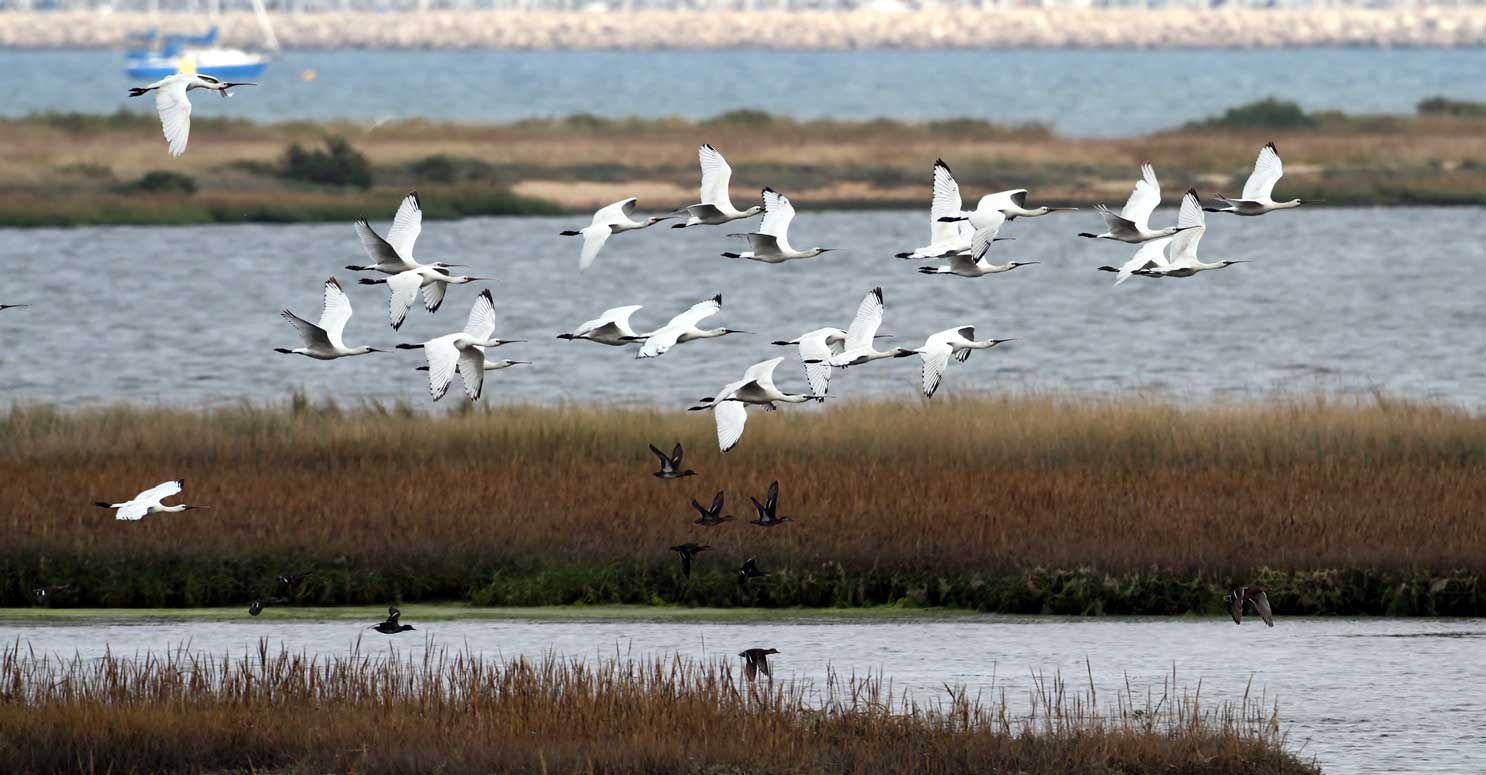
Flock of Spoonbills at
Arne
Bay, Poole Harbour
Photograph
by John Dixon
An
unprecedented 47 Spoonbills,
Platalea
leucorodia, were seen at Brownsea
Island Lagoon, Dorset. The Spoonbills
are thought to have flown in from Belgium and Holland where there is a
breeding population. Their numbers grow every winter and have gradually
increased
up to this record tally. A juvenile (with a yellow bill) Great
White Egret, Ardea
alba,
was
also seen from Brand's
Bay in Poole Harbour, Dorset.
Birds
of Poole Harbour
Brownsea
Island Lagoon Reserve (and webcam)
Brownsea
Island Nature Digest for October 2014
DWT
Brownsea on Twitter
Dorset
Wildlife Trust (DWT)
.
flickr
BRITISH
MARINE WILDLIFE

British
Marine Life Study Society
facebook
Page:
https://www.facebook.com/groups/glaucus/

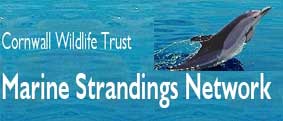
BMLSS
Oil Disasters page


